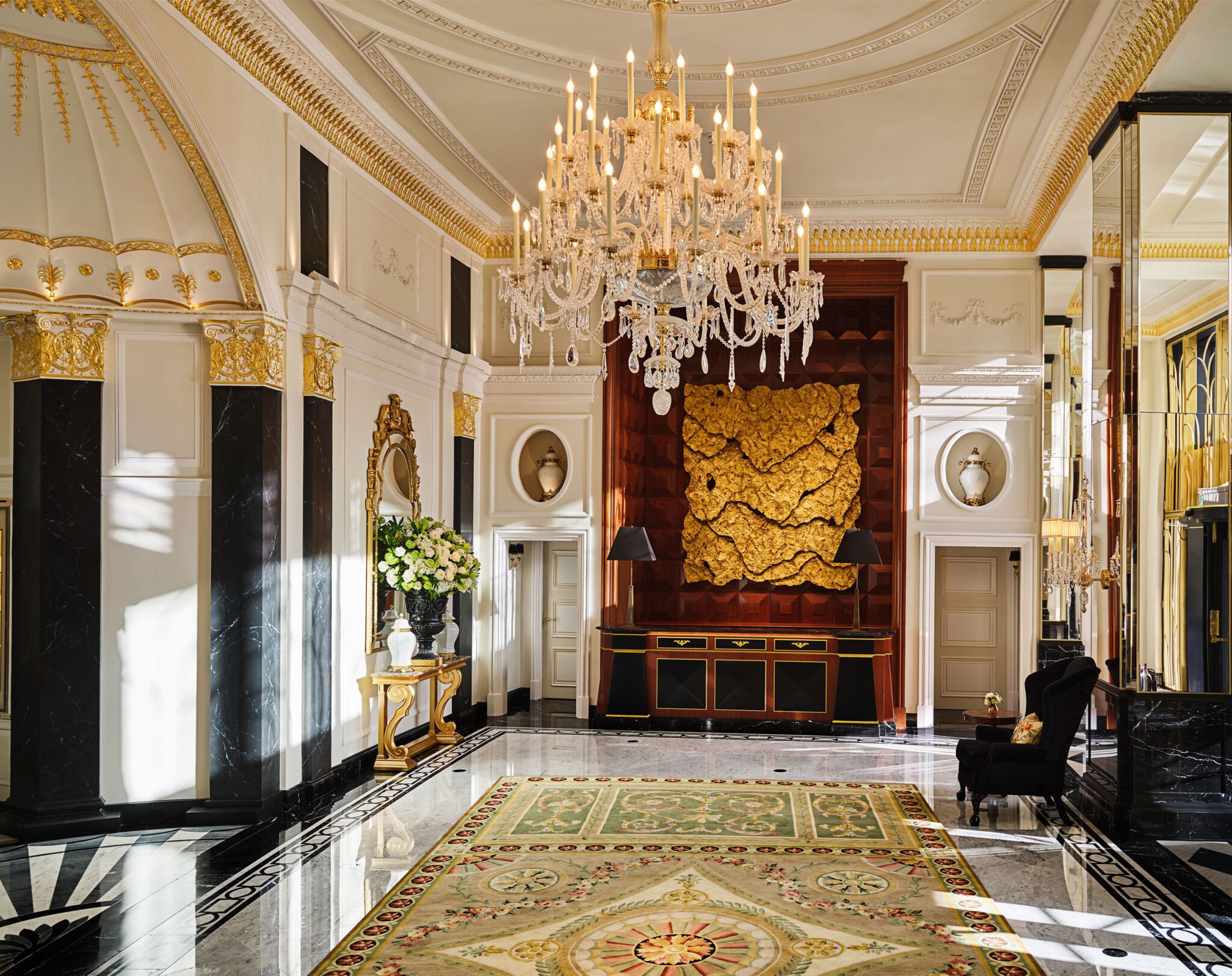One of the delights of visiting London is that each time, one can choose to visit a different London. On one recent trip, I concentrated on the remains of Roman Londinium, the London of the Romans. At other times, I have explored the London of the British Invasion, the sights of Elizabethan London, or the gritty London of Charles Dickens. But when Worth received an invitation to stay at the newly renovated Dorchester, the famous Mayfair hotel, it was the heroic London of the Blitz that beckoned.
Although I had never stayed at the Dorch (as it is fondly known to Londoners), my interest in the Second World War made me familiar with the hotel’s place in history. One of the hotel’s founders was known as “Concrete Bob” McAlpine, and the hotel’s reinforced-concrete construction won it the reputation as the safest building in Britain’s capital as the war broke out. Its appeal grew once the Luftwaffe launched the Blitz in September, 1940. The hotel was favored as a refuge by wealthy Londoners, displaced royals (like King Zog of Albania), and military leaders. The reinforced concrete, supplemented by sandbags and other defenses, provided safe shelter for General Dwight D. Eisenhower as he developed and launched America’s European strategy between 1942 and 1945. (The Eisenhower Suite at the Dorchester memorializes the connection.)

But the hotel’s wartime hospitality was not just lavished upon those quartered there. Its bars and restaurants, and the entertainment offered by the house band, made it a place of revelry and relaxation at a time when both were sorely needed. Sir John Colville’s fascinating diary of his service as Churchill’s private secretary recounts cascading military and political challenges, interspersed with dinner dates in wartime London. At one point, he confides that the Home Secretary had warned that the waiters at the Dorchester, among other spots, were thought to be “dangerous”—part of the hysteria about immigrant populations that was an unfortunate aspect of wartime life in many countries. Such suspicions proved entirely unfounded.
In fact, the bigger security risks were not the house staff but the illustrious guests themselves, whose behaviors were not always consistent with tight-lipped security. Consider Lord Halifax, Britain’s Foreign Secretary in the early stages of the war. While residing in the hotel with his wife he also pursued an affair there with Alexandra Metcalfe, who was at the same time involved with Mussolini’s London emissary. (Germany was at war for more than nine months before Italy declared war on Britain and France.) One observer likened the hotel to a ocean liner “on which the remnants of London Society have embarked,” and many of the influential figures staying or dining there knew an array of military and diplomatic secrets. Yet somehow, this sybaritic refuge was more leak-proof than the high-security Manhattan Project base at Los Alamos.
In today’s more peaceful circumstances, the hotel has embarked on a series of renovations intended to update the place while remaining true to its history and traditions. The iconic Art Deco facade now looks out not on military staff cars but on an ever-changing array of luxury automobiles. Anchoring the space in front of the hotel is a small triangular park–recently redone with many more plantings than had been there before–all dominated by a glorious London plane tree that appears as a freshly planted sapling in early pictures of the Dorchester.

As one steps into the lobby, the impression is of light and space, with reception and concierge desks to the sides, and with newly commissioned art setting the tone. On the west side of the lobby–the side nearest Hyde Park–is a large painting by Christian Furr depicting the Serpentine, a spectacular water feature in the park.
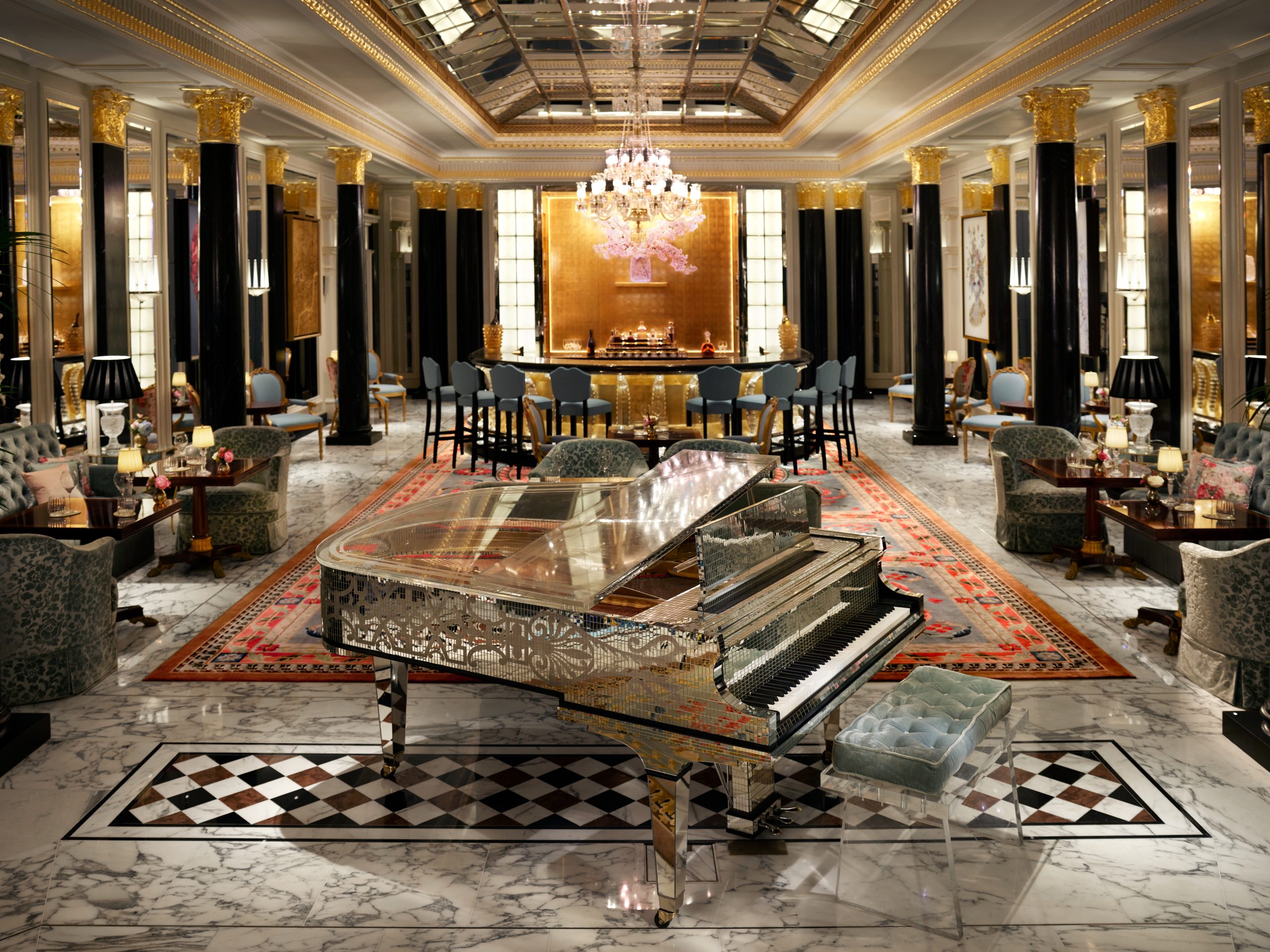
The lobby leads into the Promenade, a gathering place where guests can have meals or drinks, and which at its far end transitions into the Artist’s Bar, its walls graced with recent works by British artists. The redesign of the promenade was done under the direction of the design firm of Pierre-Yves Rochon. And perhaps the clearest measure of success is that —while it is all sparkling fresh and new—it feels as if it has always been there–It at once feels elegant and comfortable. Tables are convivial but private, the atmosphere is lively while conversations can be conducted at normal volume. Many spaces given over to this sort of activity are either sepulchral or cacophonous; the Promenade finds the happy medium.
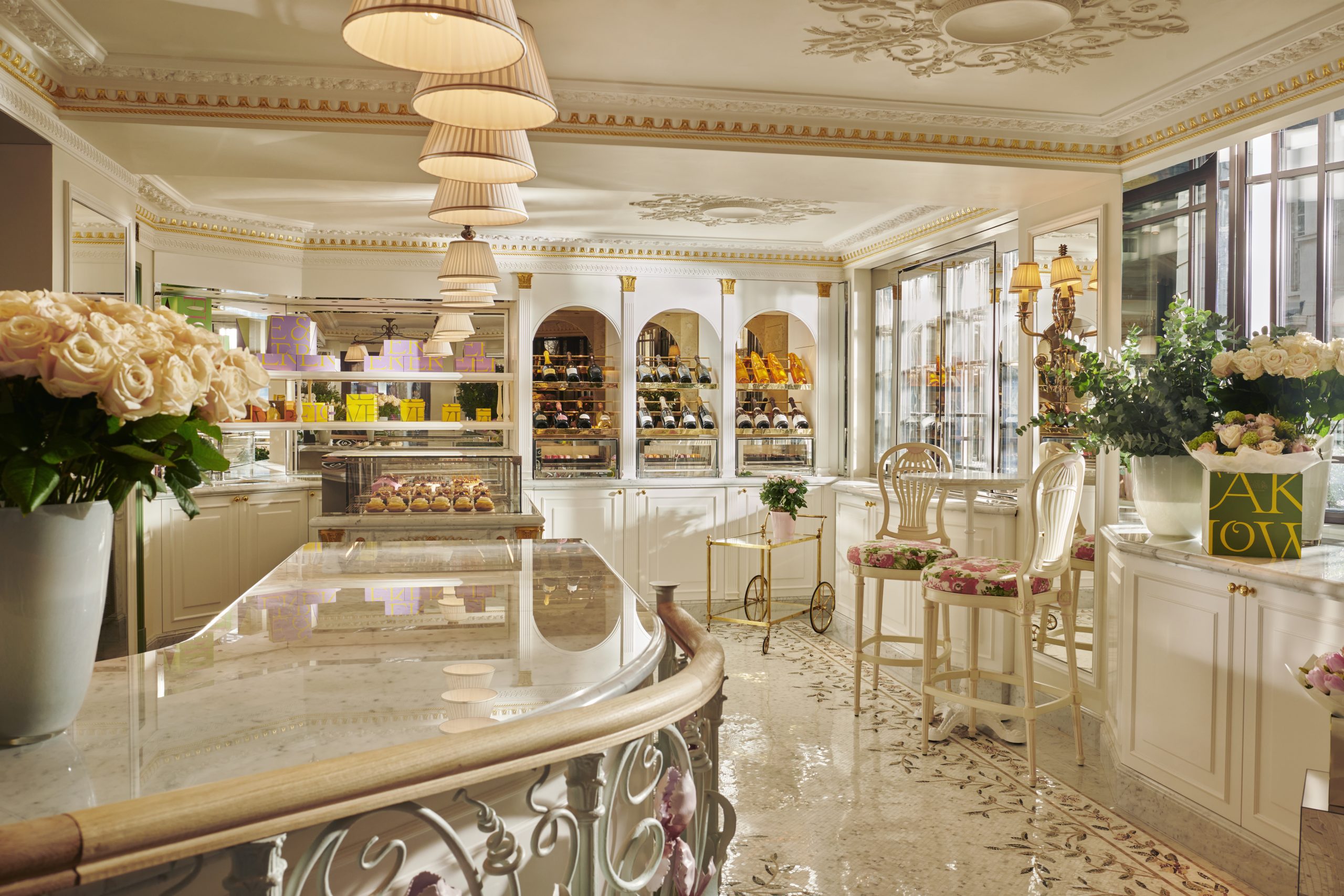
The Dorchester folks were eager to showcase the dining options at the hotel and its nearby sister property, 45 Park Lane. Our culinary tour started with high tea the afternoon we arrived. Savory finger sandwiches were followed by tiers of pastries, prepared under the direction of executive pastry chef Michael Kwan. His creations are also available at the new Cake & Flowers shop to the right of the hotel’s main entrance, which also offers flower arrangements by the hotel’s florist, Philip Hammond.
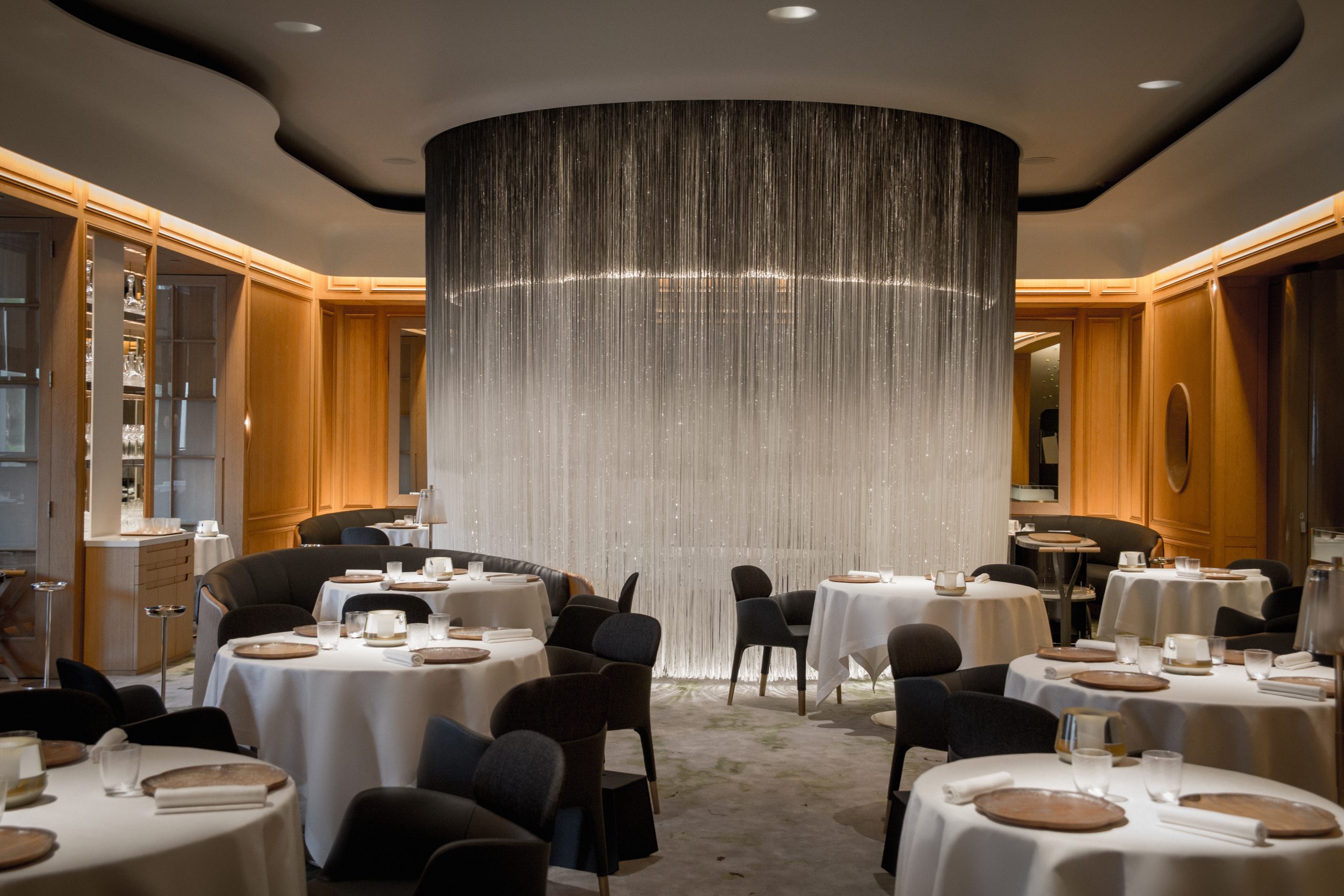
Among the dining spots housed within the hotel, the most celebrated has to be Alain Ducasse at The Dorchester, a three-Michelin-star establishment overseen by executive chef Jean-Philippe Blondet. The menu stressed vegetables and seafood, with delights such as scallop with citrus beurre blanc and caviar. A dish that matched a wafer-thin tissue of crisp eggplant with delicately smoked sardine and a bit of lemon balm balanced the richness of the fish.
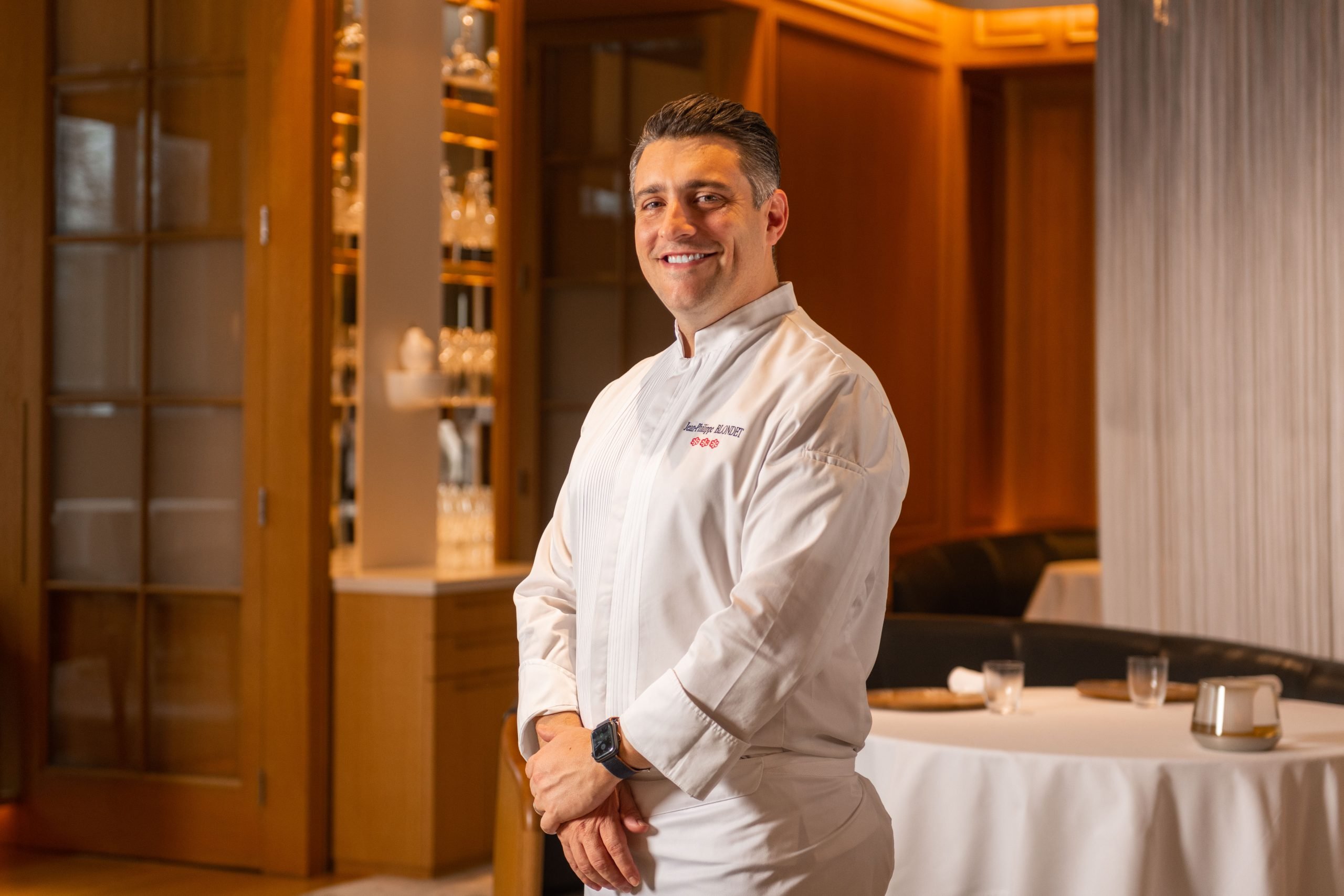
The following morning there was a tour of the property led by Chris Astbury, a Dorchester marketing maven who employed his spare time during the worst of the pandemic making a thorough study of the hotel’s history. The rounds included the site’s earlier history, the building of the hotel, and Eisenhower’s war years. Astbury mentioned a now-obscure memoir called, My Three Years with Eisenhower, by Ike’s naval aide Harry Butcher, a former Columbia Broadcasting System vice president who kept a detailed diary of his time with the general.
This part of London has long-standing ties to American visitors. Nearby Grosvenor Square has hosted American diplomatic visitors since John Adams took up quarters as America’s first Minister to the Court of St. James’s in 1785. Whitelaw Reid, the newspaper publisher who was U.S. Ambassador from 1905 to 1912, resided in Dorchester House, the mansion that formerly occupied the hotel’s site, and from which it takes its name.
Astbury also described the hotel’s visiting streams of actors (Cary Grant, Ingrid Bergman, Sean Connery, Elizabeth Taylor–35 times!) musicians (Duke Ellington, the Beach Boys, Lady Gaga) and political figures (all of the Prime Ministers since 1931 while they were in office). He also shared (on his tablet) a few clips from some of the 30-plus films that he reckons to have been shot at or around the hotel.
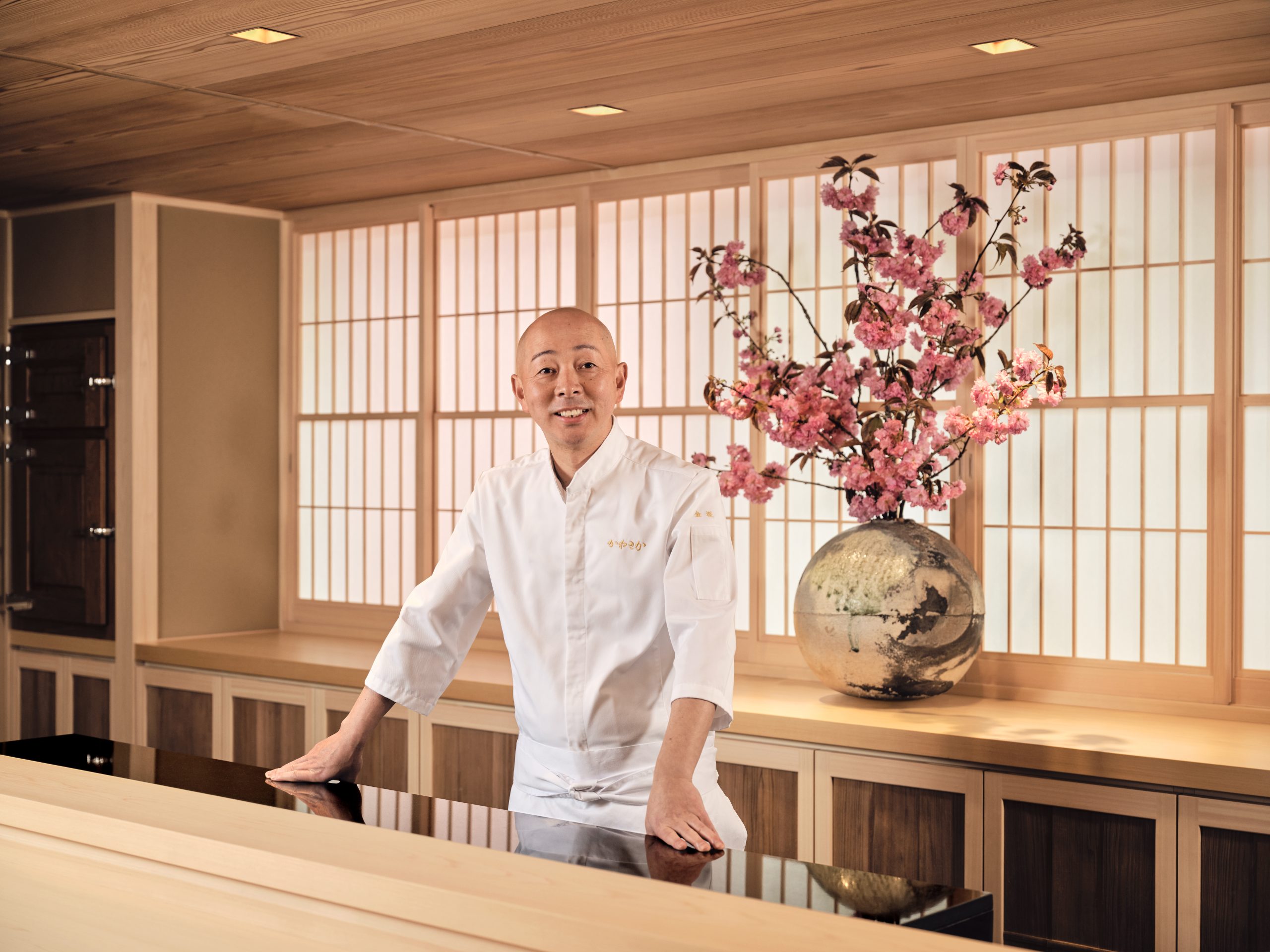
Soon after the tour, it was time to venture over to 45 Park Lane for an omakase lunch at Sushi Kanesaka, London. The chef, Shinji Kanesaka, of Tokyo’s two-Michelin-star Sushi Kanesaka, presented a procession of fifteen courses, opening with Cornish king crab and beluga caviar, and including seafood both sourced locally and flown in from Japan, as well as Kobe beef and other ingredients. Chef Kanesaka pays close attention to his diners, watching your reaction and exchanging a warm smile to match your own grin. There are only nine seats at the counter (or, if you prefer, there is a private, four-seat room), so if you are booking a stay, it would make sense to reserve there (and at Alain Ducasse) well in advance.
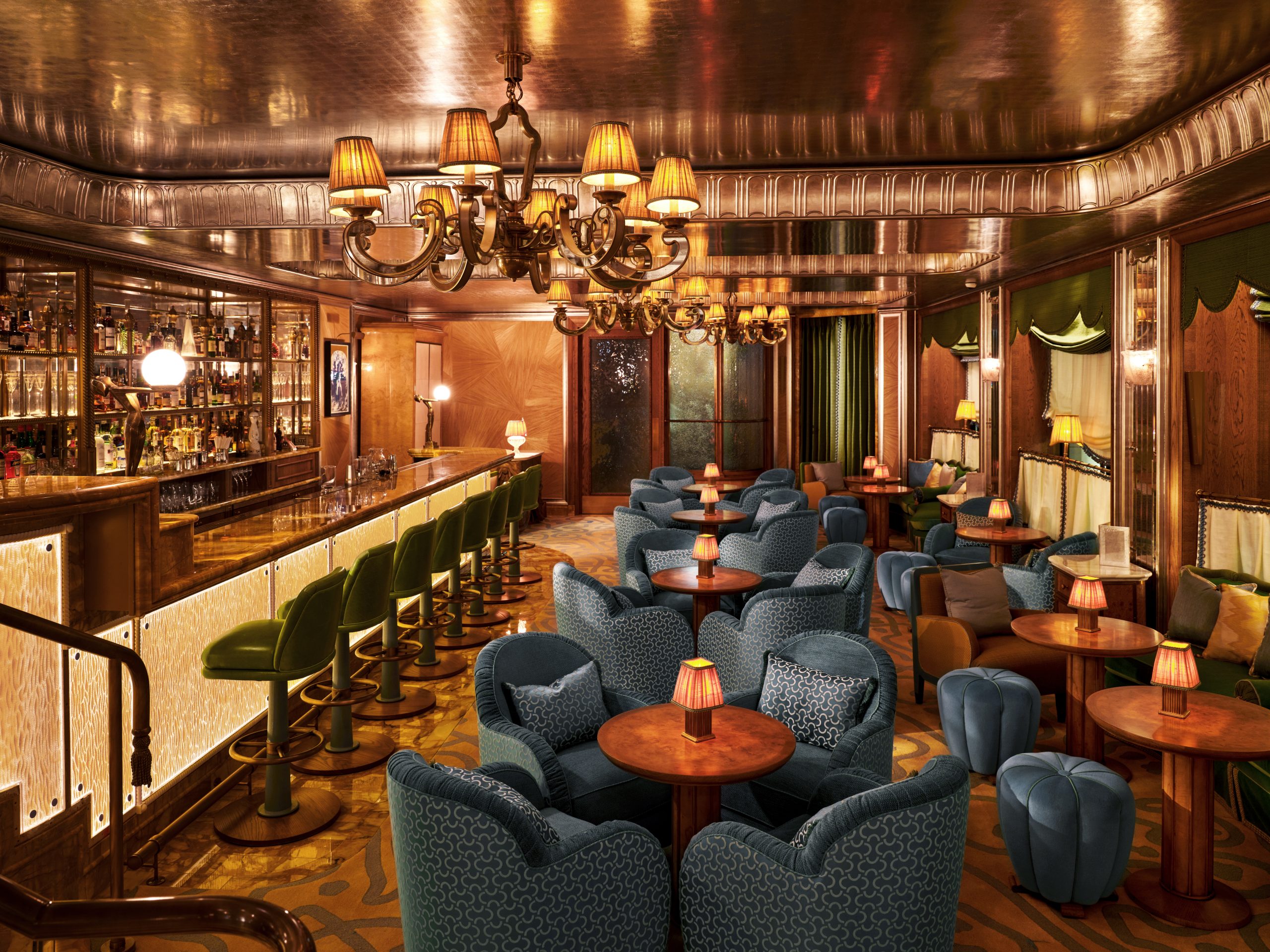
One can be more spur-of-the-moment with the Vesper Bar, home to the Vesper Martini, introduced in Ian Fleming’s first James Bond novel, Casino Royale. The Vesper Bar has a new interior, designed by Martin Brudnizki, which suggests an Art Deco Palace of Versailles. It manages to be opulent and intimate simultaneously.
On my last day at the Dorchester, I was looking out my window onto Park Lane when the car traffic suddenly vanished; shortly, teams of horses appeared, pulling cannons. It was the King’s Troop, Royal Horse Artillery, on its way to salute Charles III at the annual Trooping the Colour festivities. It seemed an appropriate reminder of the hotel’s role in Britain’s Finest Hour. Like the British monarchy, the Dorchester is a careful custodian of its history, but it is also aware (as King Charles III appears to be) of the need to move with the times while also respecting the best of one’s traditions. The Dorchester’s renovations have succeeded admirably in preparing for its approaching second century, while respecting and preserving the hallmarks of its distinguished past.

